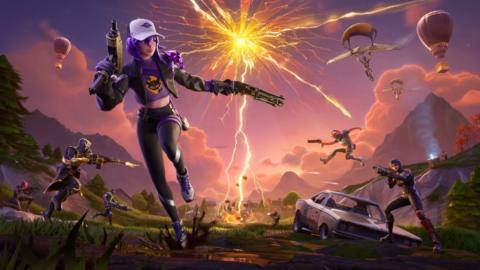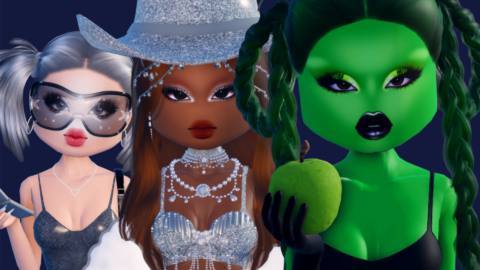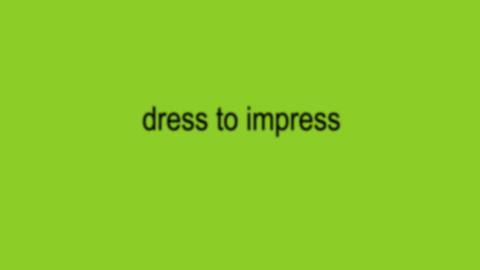Read Part 1 of this blog post from our Data Science team here.
In our previous post, we analyzed avatar aesthetics to better understand the behaviors of Roblox users. In Part 2, we continue our investigation into avatar and identity to better understand how users’ real-life identifiers intersect with their Roblox identities.
Age
Age is a substantive but easy place to start. Do older or younger users have different aesthetic preferences? Surprisingly, the answer is largely “no!”
![]() While we observe some variability in the age distribution of different clusters, in general there’s more overlap than differentiation, with only a few statistically significant deviations.
While we observe some variability in the age distribution of different clusters, in general there’s more overlap than differentiation, with only a few statistically significant deviations.
Geographic identity
Roblox is a global platform, and every culture is unique. This is reflected in our data: when plotting cluster frequencies in different countries, we see dramatic aesthetic variations.
Sometimes, this is due to demographic reasons: in Saudi Arabia, for instance, there are more self-reported women than men on Roblox, which plays out as a boost in popularity to the female-looking avatar clusters.
On the other hand, some geographic archetypes might be rooted in culture. In Brazil, we see that male-looking avatars with green sports jerseys and a brown, faux-hawk hairstyle (cluster 15 below) are disproportionately popular relative to other countries. Given Brazil’s national colors, the prominence of soccer there, and the hairstyles of their celebrities, this makes sense.
Left: Gabriel Barbosa. Attribution: Marcelo Camargo/ABr, CC BY 3.0 BR <https://creativecommons.org/licenses/by/3.0/br/deed.en>, via Wikimedia Commons Right: Neymar. Attribution: Agência Brasil Fotografias, CC BY 2.0 <https://creativecommons.org/licenses/by/2.0>, via Wikimedia Commons
![]()
Saudi Arabia Frequency of Clusters (cluster 7 is a female-dominated cluster)
![]()
Brazil Frequency of Clusters:
Gender
One of the most striking attributes of our clusters are their lopsided gender splits: most clusters are almost entirely male or female, with only a few heterogeneous groups. Roblox users with an identified gender tend to choose avatars that reflect it.
We can quantify this. An exceedingly simple convolutional neural network trained on the thumbnails was able to predict user self-identified gender with 91% accuracy. As an interesting aside, when looking at the users which the model assessed incorrectly, we find 65% to be self-identified females, implying that female users may be less likely to pick obviously female-looking avatars.
Gender split over 20 clusters:
![]()
Aesthetic extremes: Rthro and Blocky
Two specific archetypes that illustrate the aesthetic diversity in Roblox are “Rthro” and “Blocky.” Rthro is a class of “humanoid” tall and thin avatars released in 2018, while “Blocky” was an extremely popular aesthetic in earlier days at Roblox (see visual below for examples of each). Both are similarly small-sized clusters today, but could not be more visually differentiated.
To compare these specific archetypes, we took a lightweight semi-supervised approach: first we generated a larger number (100) of clusters, then manually labeled them as Rthro and Blocky from visual inspection of samples, and finally grouped clusters of the same label. This technique enables the creation of tighter, more cohesive clusters that also conform to our external criteria for the two classes.
Some clusters combined to make Blocky:
![]()
![]()
Some clusters combined to make Rthro:
![]()
![]()
First off, this exercise confirmed for us that these clusters are relatively small: they together represent only about 7% of our active user base, with less extreme Roblox body types accounting for the other 93%. Secondly, we find that the aesthetic differences between Rthro and Blocky are reflected in the characteristics of their niche users:
- Platform tenure for Blocky users is vastly longer than that of Rthro users; in fact, the typical Blocky user has been on Roblox more than twice as long as the average Rthro user.
- The difference is just as stark with playtime, with Blocky playtime double that of Rthro.
- We also find that Blocky users spend much of their playtime in a niche of games which utilize the older R6 Avatar configuration.
All these comparisons together paint a clear picture of Blocky users: a small but loyal, highly-engaged user base who are attracted to Roblox’s old, blocky aesthetic in both gameplay and avatar design. Rthro users on the other hand, are newer entrants early in their journey at Roblox.
You can imagine repeating this type of deep-dive for the other 93% of avatar bodies in between these aesthetic extremes, as well as the Robloxian subcultures they correspond to.
Potential Avatar Enhancements
Ultimately, the purpose of our analysis is to suggest or support hypotheses of how to make the Roblox experience better for our users. To suggest and evaluate initiatives, it’s sometimes helpful to go beyond a spec and build an actual proof of concept (PoC) for consideration on the product roadmap.
Here are a few such examples we put together this summer. To be clear, these are just prototypes, and may never see the light of day, but they hopefully illustrate how a deep understanding of our users can help us create a product that better serves them.
1. Improved Avatar Defaults: At present, many new users stick with the standardized default avatars they are first assigned. Product hypothesis: by helping new users quickly build a customized and personally resonant avatar, we could deepen the value they get out of Roblox.
Leveraging our avatar clustering models, we can provide users with a sample of unique, cool-looking avatars right off the bat based on existing highly customized designs. Imagine when you first join Roblox, you are shown the five (measurably diverse) avatars below as thought starters. Perhaps scrolling over them could reveal even more unique variations?
![]()
2. Suggested outfit variations: The type of “avatar inspiration” that default avatars provide could also be valuable in editing existing avatars. This is essentially a new search and discovery opportunity: presenting heavily-edited Avatar archetypes to users to spark their imagination, based either on similarity or dissimilarity. The user flow of our prototype (see below) has issues, but it’s quite cool when it works.
3. Describe your avatar: Sometimes the benefit of prototyping is in informing feasibility and timelines. Consider the particularly ambitious idea of turning a user’s English-language query into an automatically decked-out avatar. A step in this direction is to algorithmically tag avatar assets with descriptive words. However, as you can see in the examples below, off-the-shelf modeling techniques have an amusingly long way to go.
This particular example yields an instructive meta-learning: there is so much diversity in Roblox assets that it’s challenging to properly model the space even with pretrained networks and tens of thousands of training samples.
Each example contains an asset thumbnail. Below it are automatically suggested tags along with scores for the relevance of each tag (smaller is better).
![]()
At least “panda” is in the top eights… but regardless I find the “turtle” and “dog” guesses adorable.
![]()
One would think color is easy to learn, but apparently not.
![]()
The model had the right idea here! It just can’t make the more fine-grained distinctions between different types of weapons.
Conclusion: Building Product Around Identity
This study of Avatar aesthetics makes it clear that there is no single Roblox journey. Users come from myriad backgrounds, and look for a similar diversity of experiences and representation on the platform. As data scientists, we like to think about product development in terms of hypotheses. Framing it in this language, our core hypothesis is that product features that embrace the diverse aesthetic needs of our users will serve both them and the Metaverse best.
In general, this is a pattern we love: pairing deep analysis that paints a picture of user needs with the kind of innovative product development you might have heard our developers cheering at RDC. We’re at the very beginning of both sides of this journey with Avatar, and we’re going to need lots of help along the way!
Nameer Hirschkind is a Data Science Intern at Roblox. He works on Roblox’s Avatars to help every player create an Avatar they love. Neither Roblox Corporation nor this blog endorses or supports any company or service. Also, no guarantees or promises are made regarding the accuracy, reliability or completeness of the information contained in this blog.
©2021 Roblox Corporation. Roblox, the Roblox logo and Powering Imagination are among our registered and unregistered trademarks in the U.S. and other countries.
The post Avatars and Identity in the Metaverse, Part 2 appeared first on Roblox Blog.






